Disclaimer: This blog post contains affiliate links. If you make a purchase through these links, I may earn a small commission at no additional cost to you. Learn More. Thank you for supporting our garden community.
10 Best Flowers for Raised Garden Beds for Long-Lasting Blooms
Last Updated: July 6, 2024
Are you struggling to choose the perfect flowers for your raised garden bed? You’re not alone. Many gardeners find themselves overwhelmed by the countless options available. But fear not! This guide will walk you through the 10 best flowers for raised garden beds, helping you create a stunning and thriving elevated garden.
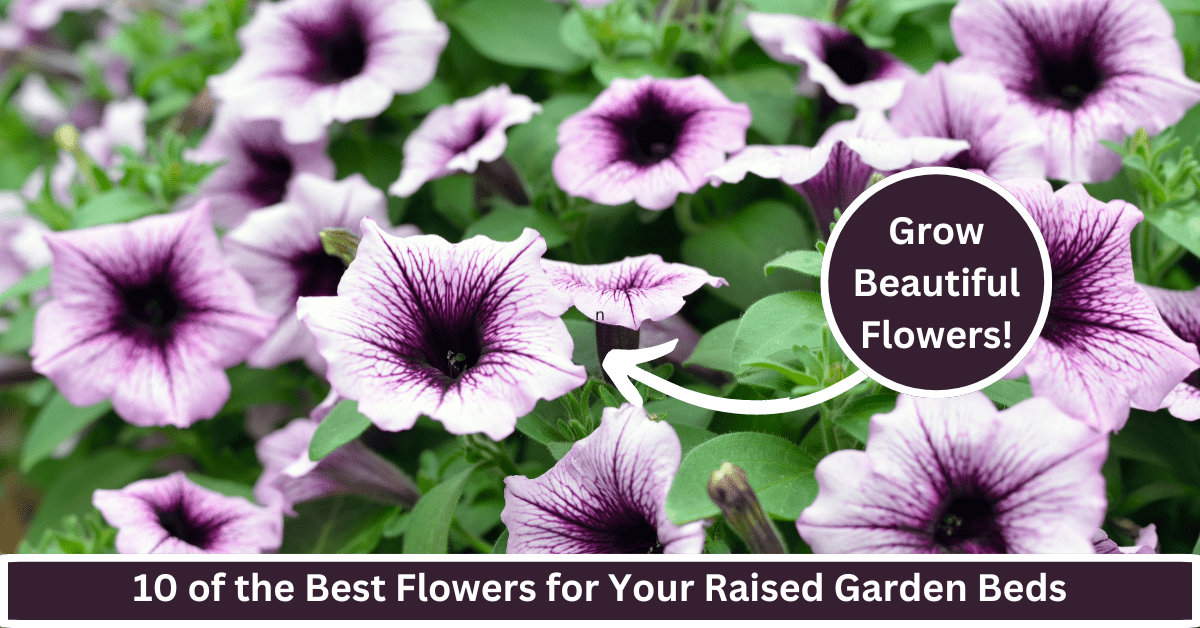
Raised garden beds offer numerous advantages, from better soil control to easier maintenance, making them an ideal choice for both novice and experienced gardeners.
In this comprehensive guide, we’ll explore a diverse selection of flowers that not only thrive in raised beds but also contribute to creating a stunning, low-maintenance garden that will be the envy of your neighborhood.
Best Flowers for Raised Garden Beds
Here’s what this post covers:
- Best Flowers: We cover the 10 best flowers for raised garden beds, taking into account the growing conditions of raised beds.
- Elevated Gardens: We offer guidance on creating a vibrant, low-maintenance, and beautiful raised bed garden, using the 10 best flowers.
- Variation: The list includes specific flowers with different colors, blooming periods, growing conditions, and heights, offering variation in your raised bed garden.
- Growing Tips: Each flower suggestion is equipped with their own set of additional information, including benefits and growing tips.
- Emphasis on Garden Conditions: This post emphasizes the specific growing conditions of each flower, providing you with flowers that are suited for your climate and garden.
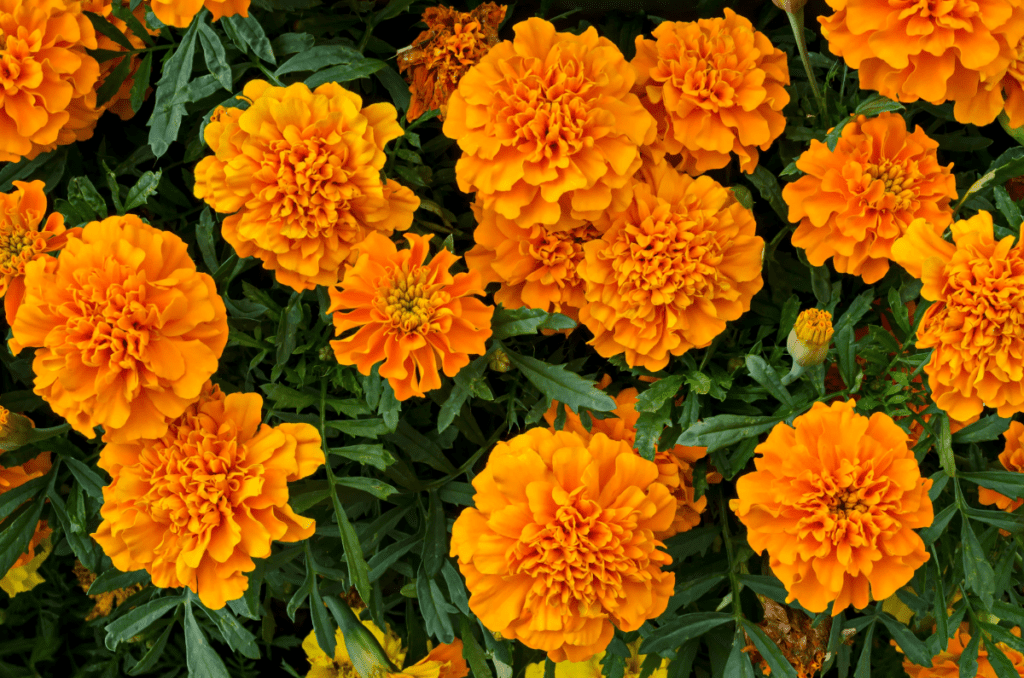
Marigolds: The Vibrant Pest Deterrent
Marigolds are a fantastic choice for raised garden beds, offering both beauty and functionality. These cheerful flowers come in shades of yellow, orange, and red, adding a pop of color to any garden.
There are many different varieties of marigold that you should grow. Epic Gardening covers 30 different varieties in their post.
If you want to buy marigold seeds for your garden, check out SeedsNow. They carry an extensive selection of flower seeds, including marigolds, along with all other vegetable seeds.
Benefits of planting marigolds:
- Natural pest repellent
- Low maintenance
- Long blooming period
Pro tip: Plant marigolds around the edges of your raised bed to create a protective barrier against pests. They sort of act as an invisible fence, as the scent repels many common garden pests, such as aphids.
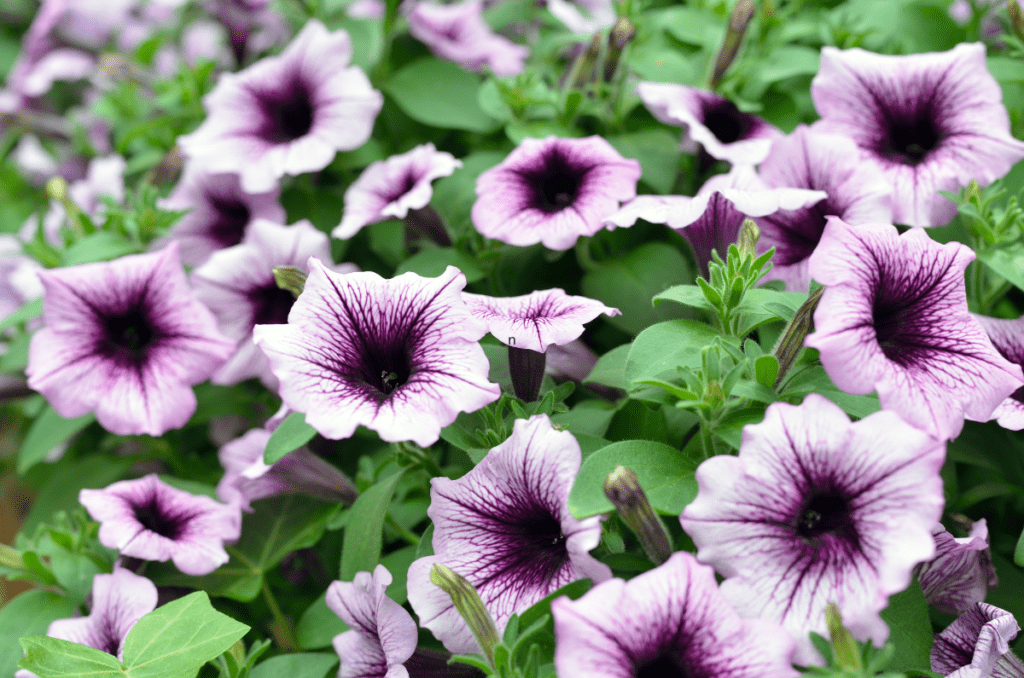
Petunias: A Cascade of Color
Petunias are perfect for raised garden beds, especially if you’re looking for flowers that spill over the edges. Their trailing habit creates a beautiful cascade effect, making your garden bed look lush and full.
Petunias also come in many different varieties, although they are typically not grown from seed.
Instead, petunias are grown from transplants bought from a nursery. Nature Hills Nursery is the largest online plant nursery, and they also carry petunias for your garden.
Why choose petunias:
- Wide variety of colors
- Drought-tolerant once established (although have small root systems when young)
- Attract pollinators like butterflies and hummingbirds
Have you considered mixing different petunia colors for a rainbow effect? Share your color combination ideas in the comments!
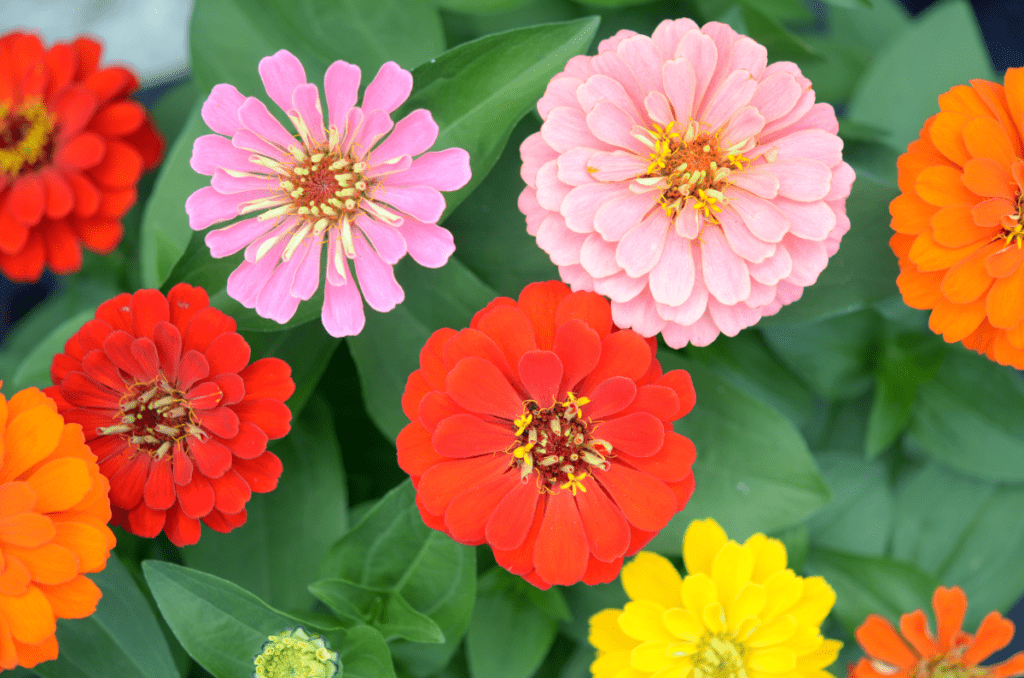
Zinnias: Easy-to-Grow Showstoppers
Zinnias are a gardener’s dream for raised beds. These fast-growing annuals provide a burst of color throughout the summer and into fall.
There is a vast selection of zinnia varieties, each with their own color, flower shape, and petal arrangement.
You can check out SeedsNow for their selection of zinnia seeds. Each variety is quality tested and guaranteed to grow in your garden.
Zinnia growing tips:
- Sow seeds directly in the raised bed after the last frost
- Provide full sun and well-draining soil
- Deadhead regularly to encourage more blooms
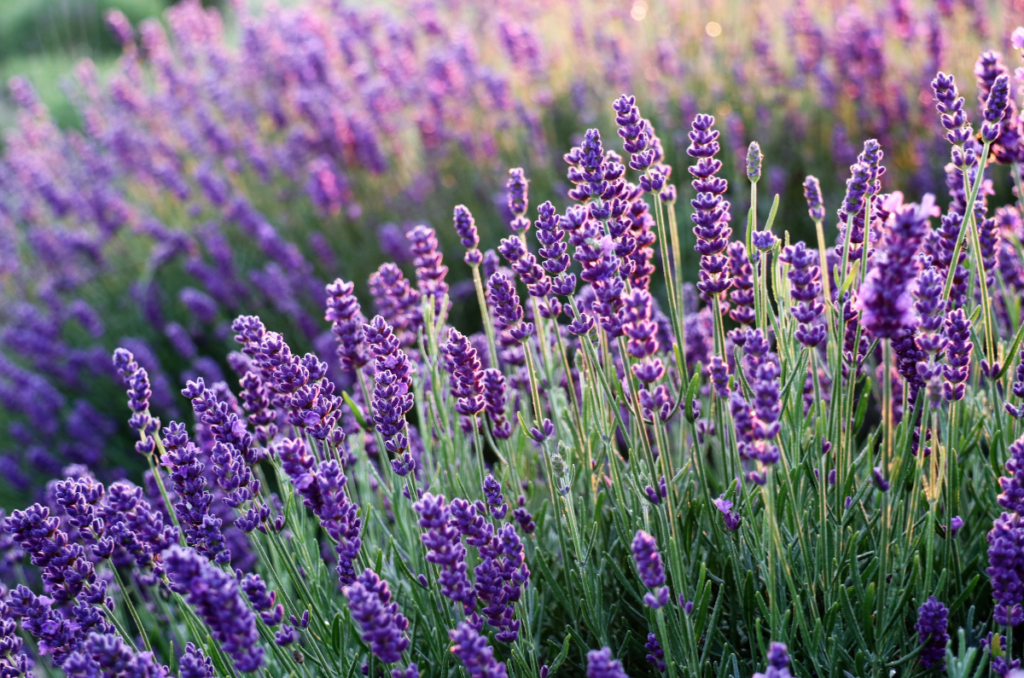
Lavender: Fragrant and Drought-Resistant
Lavender is an excellent choice for raised garden beds in sunny, dry locations. Its fragrant blooms and silvery foliage add both visual interest and a calming aroma to your garden.
Lavender, along with other perennial herbs like rosemary, thyme, and oregano, is known for its drought-resistant properties. This makes lavender perfect for those long and hot summer days.
SeedsNow carries seeds for English lavender.
Benefits of lavender:
- Drought-resistant
- Attracts pollinators
- Can be used for culinary and aromatherapy purposes

Black-Eyed Susans: Hardy Native Blooms
Black-eyed Susans are hardy and native to most parts of the USA and Canada. They are flowers that thrive in raised garden beds. Their bright yellow petals and dark centers create a striking contrast.
Check out SeedsNow to purchase black-eyed susan flowers for your garden.
Why plant Black-eyed Susans:
- Attract beneficial insects
- Bloom from mid-summer to fall
- Low maintenance and drought-tolerant
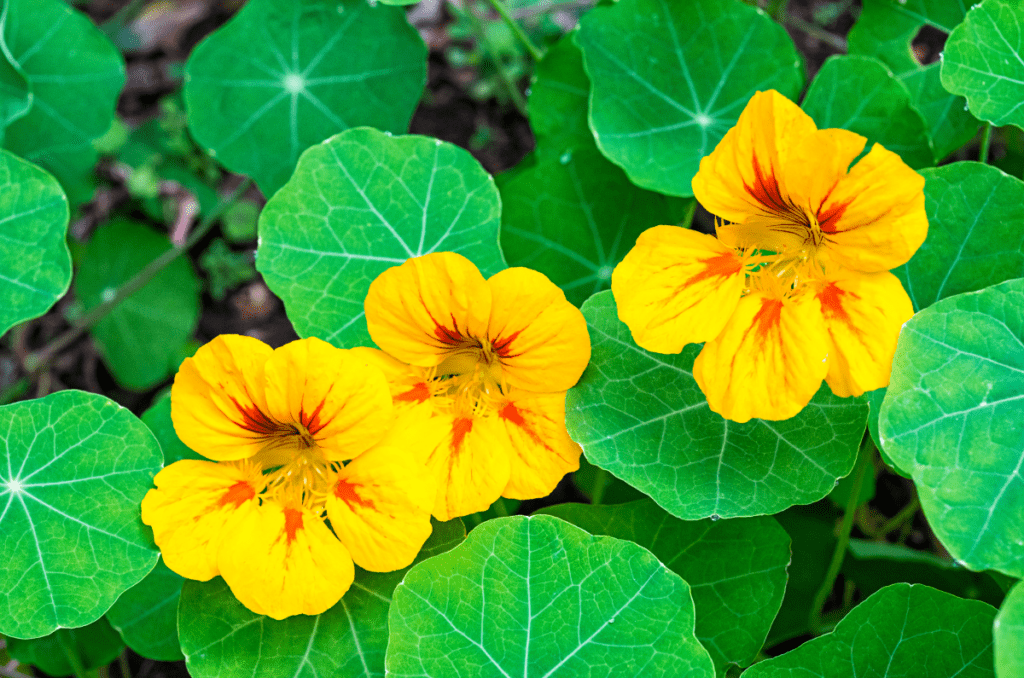
Nasturtiums: Edible Beauty
Nasturtiums are a versatile choice for raised garden beds, offering both ornamental and culinary benefits, as every part of the plant is edible. Their vibrant flowers come in shades of red, orange, and yellow.
There are also variegated nasturtium varieties, meaning that the leaves are half green and half white. This type of plant can create the right visual appeal for your garden.
If you are looking to buy nasturtium seeds for your garden, check out SeedsNow’s wide selection of nasturtiums.
Nasturtium growing tips:
- Plant in full sun to partial shade
- Avoid overly rich soil for better blooms
- Harvest flowers and leaves for salads or garnishes
What’s your favorite way to use nasturtiums in the kitchen? Let us know in the comments! Personally, I think it tastes like gasoline (not that I would know what gasoline tastes like 🤔)
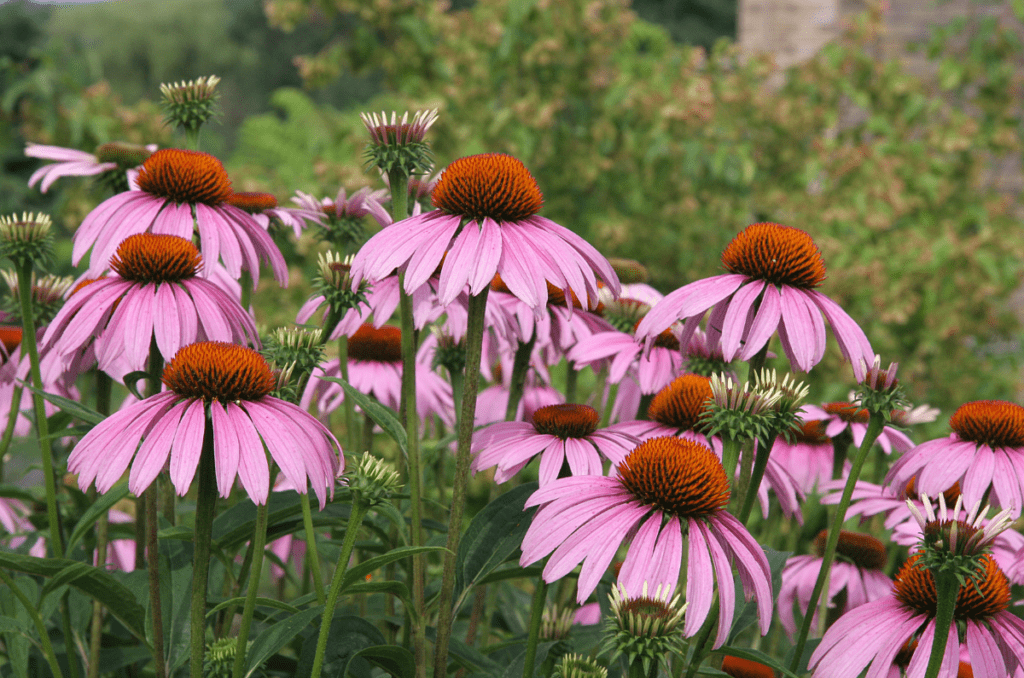
Coneflowers (Echinacea): Pollinator Paradise
Coneflowers are perfect for attracting pollinators to your raised garden bed. These hardy perennials bloom throughout the summer and into fall.
Purple coneflowers are native in my area as well as in most parts of eastern North America, making them an excellent choice for many gardeners. Planting purple coneflowers will help to support local wildlife and endangered species.
As for raised beds, these flowers grow taller than others and can attract many pollinators, including monarchs, bees, and wasps.
SeedsNow also carries coneflower seeds, so check them out if you are interested.
Benefits of coneflowers:
- Drought-tolerant
- Attract bees, butterflies, and birds
- Medicinal properties
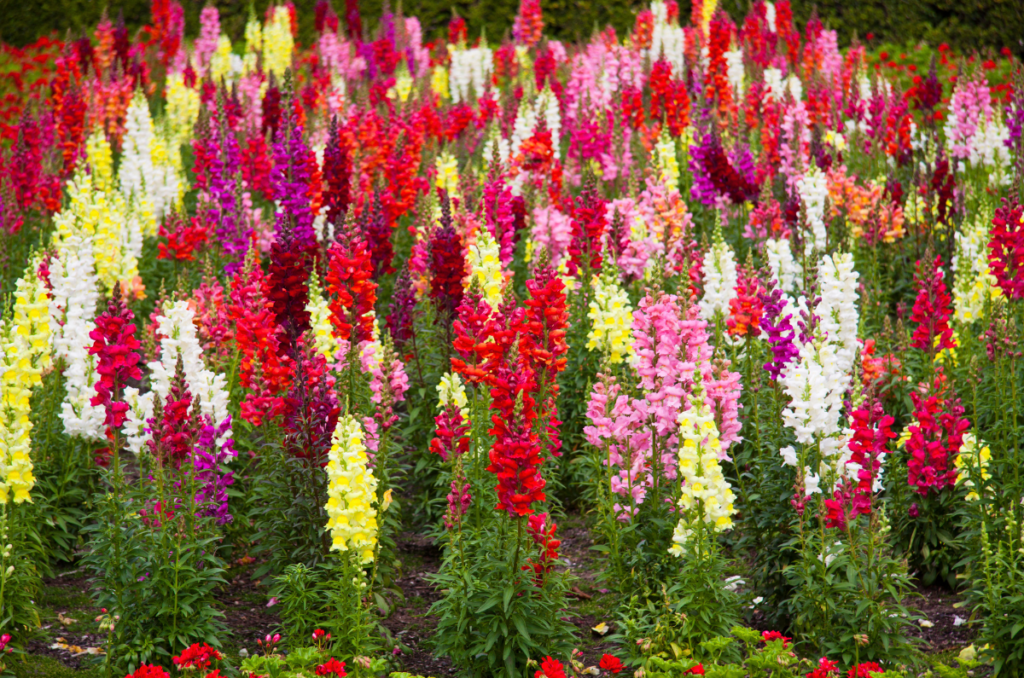
Snapdragons: Vertical Interest
Snapdragons add vertical interest to raised garden beds with their tall, colorful spikes of flowers. They’re perfect for creating a backdrop or centerpiece in your garden design.
Snapdragon care tips:
- Plant in full sun to partial shade
- Pinch back young plants to encourage bushiness
- Provide support for taller varieties

Pansies: Cool-Season Color
Pansies are ideal for adding color to raised garden beds during cooler seasons. Their cheerful faces come in a wide range of colors and patterns.
Pansies are typically shorter than other plants, growing to only 6-12 inches. When paired with other flowers on this list, pansies can create a beautiful visual display of height.
Why choose pansies:
- Thrive in cooler temperatures
- Long blooming period
- Edible flowers
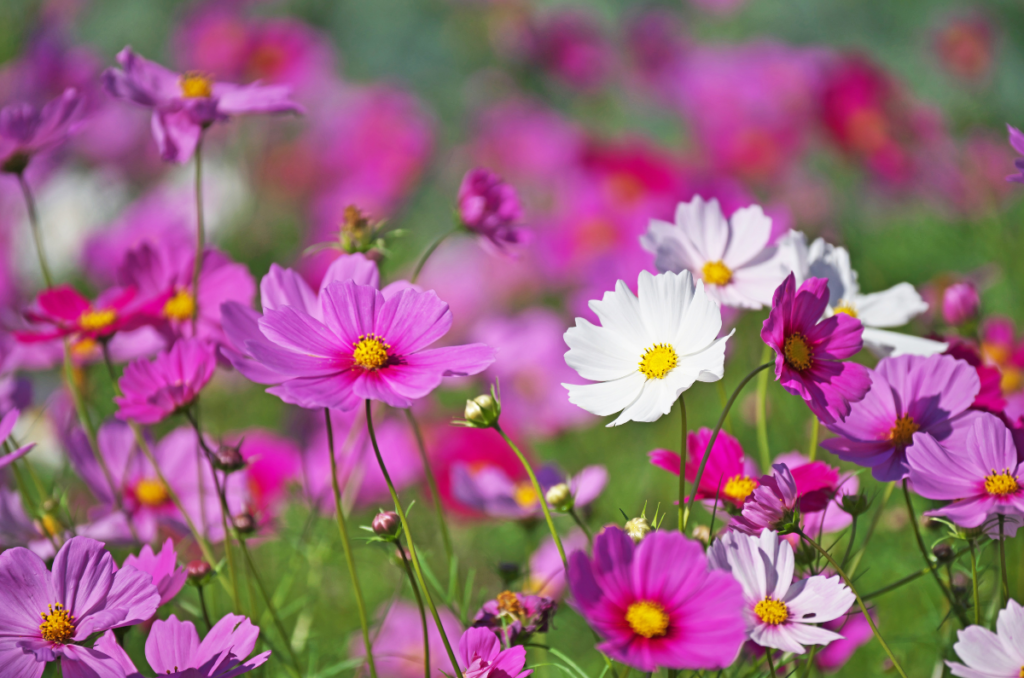
Cosmos: Airy Elegance
Cosmos bring an airy, elegant feel to raised garden beds. These easy-to-grow annuals bloom profusely throughout the summer.
If you are looking to plant cosmos in your garden, SeedsNow carries a cosmos seed mix that includes 7 different cosmos varieties. Each variety has a different color or other feature.
Cosmos growing tips:
- Sow seeds directly in the garden after the last frost
- Provide full sun and well-draining soil
- Deadhead regularly for continuous blooms
Frequently Asked Questions
Marigolds, zinnias, and petunias are excellent low-maintenance options for raised beds.
Coneflowers, lavender, and cosmos are great for attracting bees, butterflies, and other pollinators.
Sunflowers, black-eyed Susans, and zinnias thrive in full sun conditions in raised beds.
Yes, nasturtiums and pansies are both attractive and edible flowers for raised beds. To learn more, check out our list of the 5 best edible flowers for your garden.
Petunias, marigolds, and snapdragons offer a wide range of colors for vibrant raised bed gardens.
Marigolds and lavender are known for their pest-repelling properties in raised beds.
Even More Gardening Ideas
Here are a few more posts to get the ball rolling in your garden!
- 5 Best Edible Flowers for Your Garden
- The 10 Most Fragrant Flowers for Your Garden
- Nasturtium: The Garden Must-Have
Products
For all-purpose organic fertilizers, check out Arber.
To buy organic, non-GMO garden seeds, check out SeedsNow.
For a wide selection of perennial garden plants, check out Nature Hills Nursery.
For gardening equipment, check out Bootstrap Farmer
Conclusion
With these 10 best flowers for raised garden beds, you’re well on your way to creating a stunning and thriving elevated garden. Remember to consider factors like sun exposure, soil type, and watering needs when planning your raised bed garden. Mix and match these flowers to create a unique and colorful display that suits your style and preferences.
Ready to transform your raised garden bed into a floral paradise? Share your favorite flower combinations or gardening tips in the comments below. Don’t forget to subscribe to our newsletter for more gardening inspiration and expert advice!
This post was linked to in Simple Life Mom’s Homestead Blog Hop 505, so check them out to learn more!
If you want to learn more about gardening, foraging, nature, and sustainability, check out The Real Gardener on Instagram, YouTube, and Pinterest.
Pin this post for later:
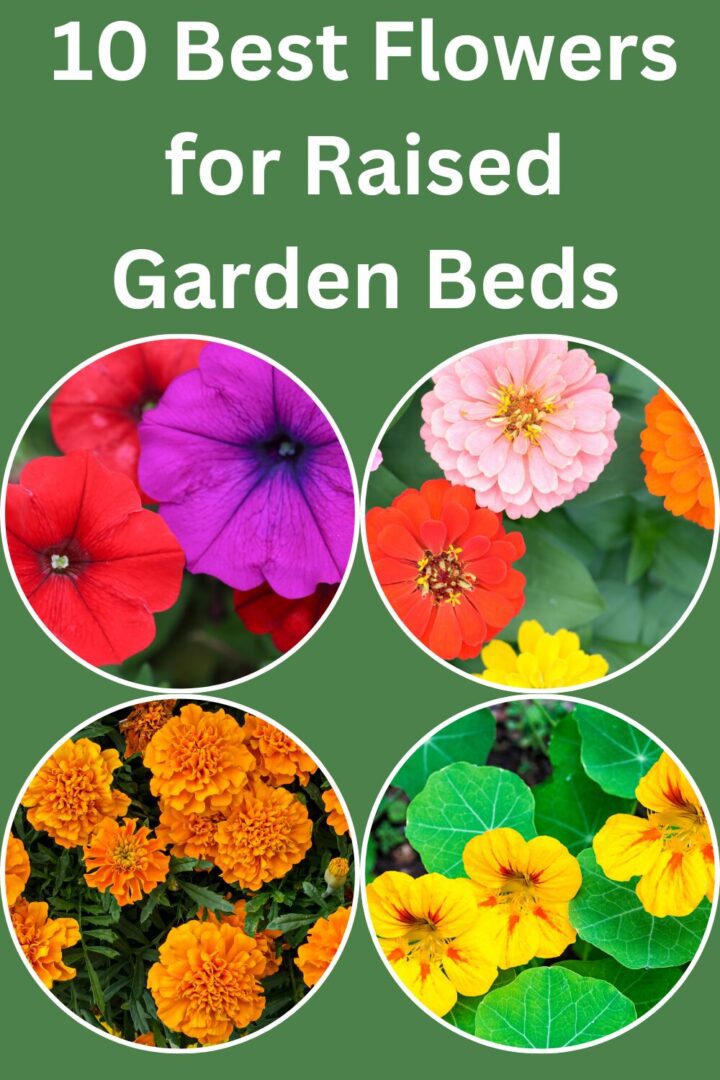
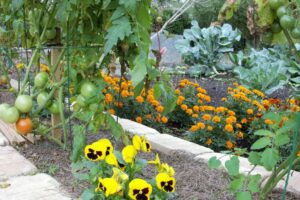
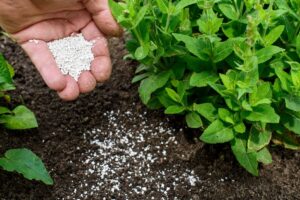
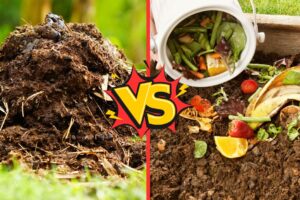

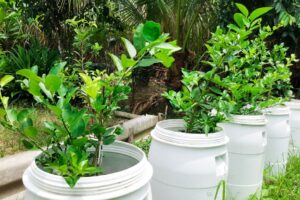


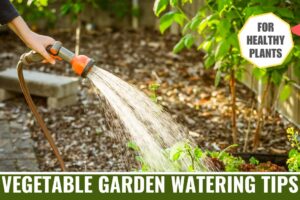
Leave a Reply